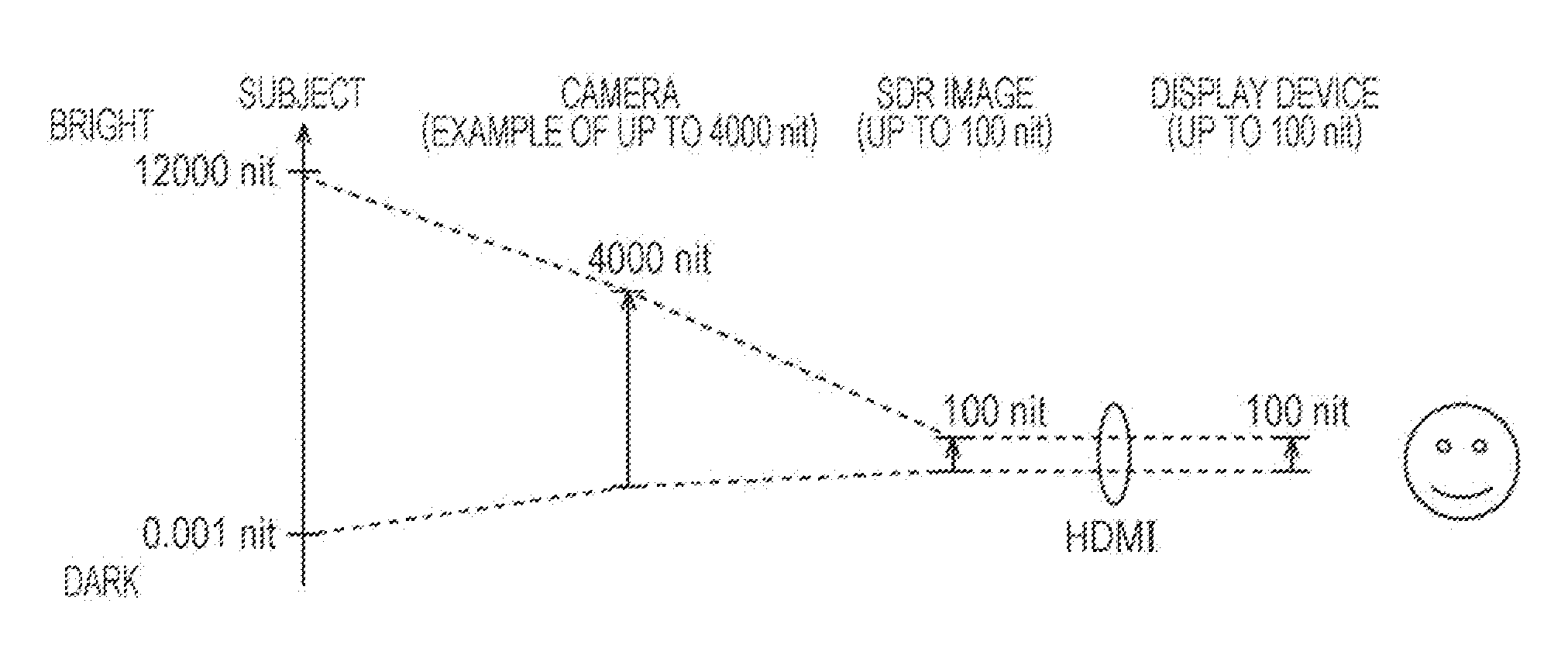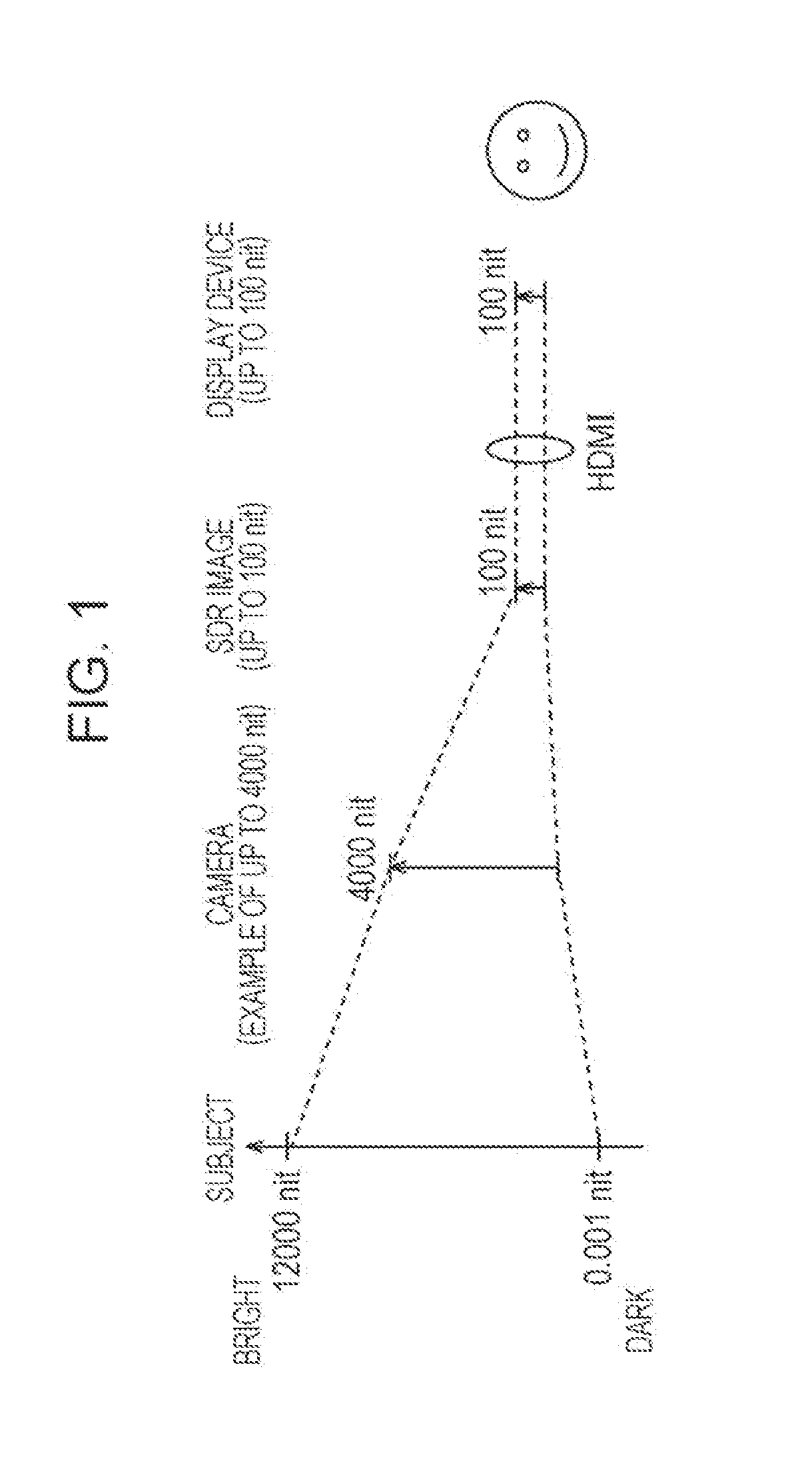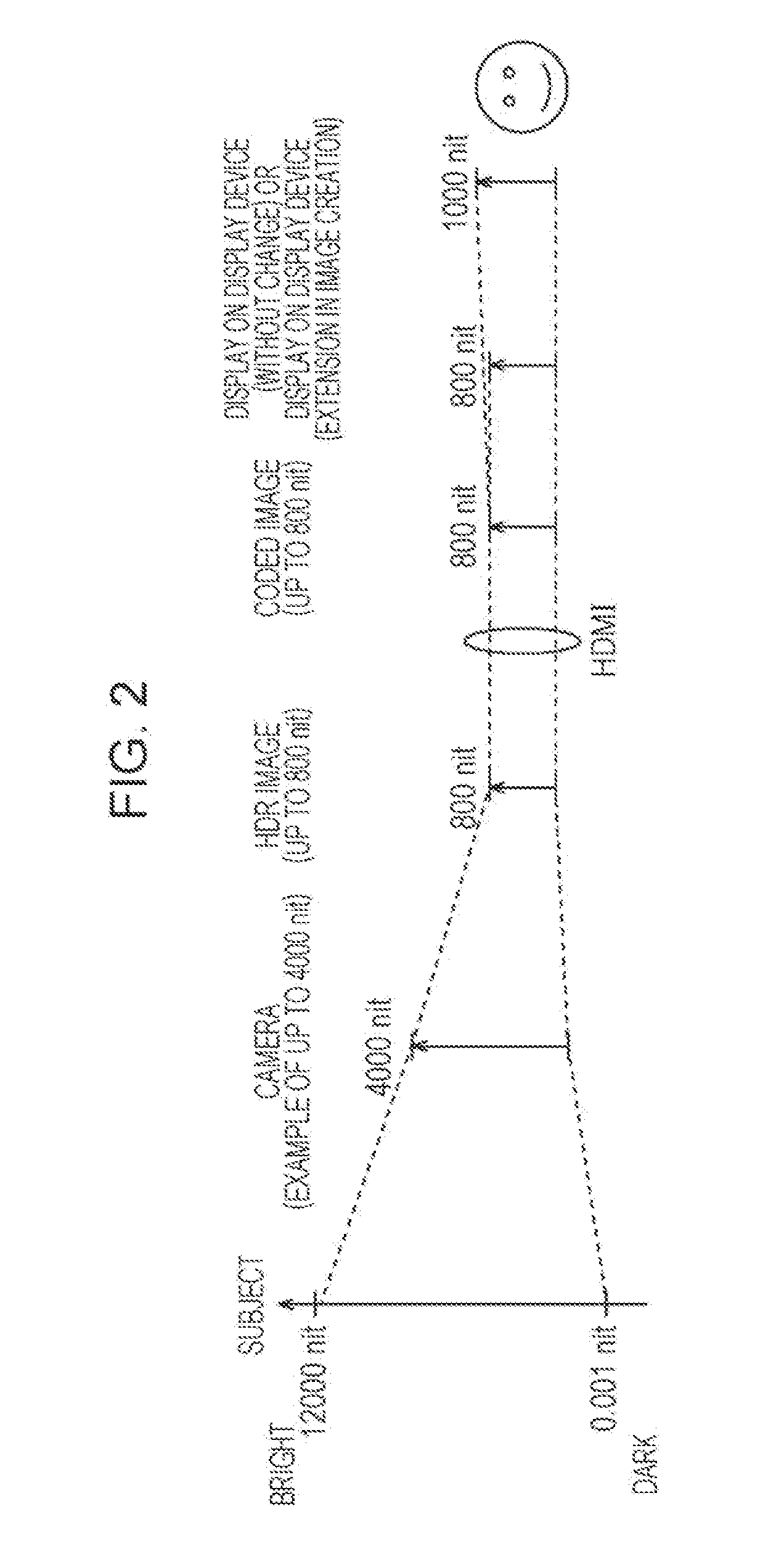Decoding device and decoding method, and coding device and coding method
a coding method and decoding device technology, applied in the field of decoding devices and decoding methods, and coding devices and coding methods, can solve the problem of not handling a coding method at a bit rate lower than that in mpeg1, and higher compression ratio
- Summary
- Abstract
- Description
- Claims
- Application Information
AI Technical Summary
Benefits of technology
Problems solved by technology
Method used
Image
Examples
first embodiment
Configuration Example of First Embodiment of Decoding Device
[0164]FIG. 12 is a block diagram illustrating a configuration example of an embodiment of a decoding device which decodes a coded stream transmitted from the coding device 10 of FIG. 6 and to which the present disclosure is applied.
[0165]A decoding device 50 of FIG. 12 includes a reception unit 51, an extraction unit 52, a decoding unit 53, a conversion unit 54, a display control unit 55, and a display unit 56.
[0166]The reception unit 51 of the decoding device 50 receives the coded stream transmitted from the coding device 10 of FIG. 6, and supplies the coded stream to the extraction unit 52.
[0167]The extraction unit 52 extracts the parameter sets and the coded data of the SDR image from the coded stream which is supplied from the reception unit 51. The extraction unit 52 supplies the parameter sets and the coded data to the decoding unit 53. In addition, the extraction unit 52 supplies the knee_function_info SEI among the ...
second embodiment
Configuration Example of Second Embodiment of Decoding Device
[0222]FIG. 22 is a block diagram illustrating a configuration example of a second embodiment of a decoding device which decodes a coded stream transmitted from the coding device 70 of FIG. 16 and to which the present disclosure is applied.
[0223]Among constituent elements illustrated in FIG. 22, the same constituent elements as the constituent elements of FIG. 12 are given the same reference numerals. Repeated description will be omitted as appropriate.
[0224]A configuration of a decoding device 90 of FIG. 22 is different from the configuration of the decoding device 50 of FIG. 12 in that an extraction unit 91, a decoding unit 92, a conversion unit 93, a display control unit 94, and a display unit 95 are provided instead of the extraction unit 52, the decoding unit 53, the conversion unit 54, the display control unit 55, and the display unit 56. The decoding device 90 converts a decoded image into a converted image according...
fifth example
of DR Conversion Information)
[0311]FIGS. 42 and 43 are diagrams illustrating examples of DR conversion information set in the knee_function_info SEI of FIG. 40.
[0312]In the example of FIG. 42, a coding target image is an HDR image (hereinafter, referred to as a 200% HDR image) whose dynamic range is 0 to 200%. In addition, the user sets a 400% HDR image which is obtained as a result of respectively knee-converting 0 to 120%, 120% to 160%, 160% to 180%, and 180% to 200% of luminance of a 200% HDR image into 0 to 40%, 40% to 100%, 100% to 180%, and 180% to 400%, as a desired converted image. The 400% HDR image is an HDR image whose dynamic range is 0 to 400%.
[0313]In this case, in the knee_function_info SEI, the same values as in FIG. 30 are set as pre-conversion position information (input_knee_point) and post-conversion position information (output_knee_point) of the 0-th to second knee points. In addition, 2000 is set as the unconverted luminance range information (input_d_range), ...
PUM
 Login to View More
Login to View More Abstract
Description
Claims
Application Information
 Login to View More
Login to View More - R&D
- Intellectual Property
- Life Sciences
- Materials
- Tech Scout
- Unparalleled Data Quality
- Higher Quality Content
- 60% Fewer Hallucinations
Browse by: Latest US Patents, China's latest patents, Technical Efficacy Thesaurus, Application Domain, Technology Topic, Popular Technical Reports.
© 2025 PatSnap. All rights reserved.Legal|Privacy policy|Modern Slavery Act Transparency Statement|Sitemap|About US| Contact US: help@patsnap.com



